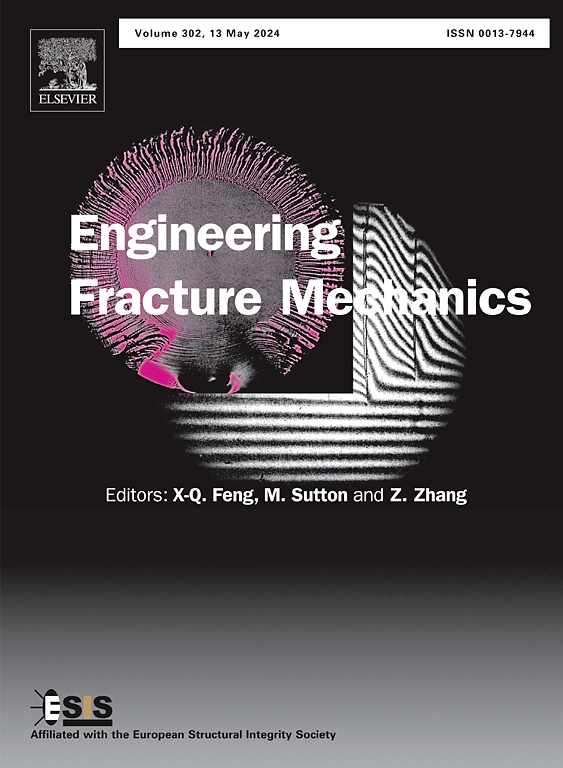Determination of the effective crack resistance in porous materials using a fracture phase-field model
IF 4.7
2区 工程技术
Q1 MECHANICS
引用次数: 0
Abstract
This work investigates the simulation-based determination of the effective fracture resistance of porous materials. Following the approach of Hossain et al. (2014), we conduct numerical experiments to identify effective crack resistance as a material parameter. Displacement boundary conditions corresponding to a steadily propagating macroscopic crack are applied to a representative microstructure. At the microscale, crack growth is simulated without prior assumptions regarding crack paths, continuity of propagation, or other features. The maximum value of the macroscopically acting J-integral defines the driving force required to advance the crack by a macroscopic length increment without arrest, which we refer to as the effective crack resistance. To simulate crack evolution in the microstructure without predefined growth assumptions, we employ a phase-field model. Phase field models are particularly well suited for this purpose. Our findings indicate that crack re-nucleation is a toughness determining failure mechanism in porous materials. We investigate the influence of various parameters on the characteristic length at which cracks re-nucleate, revealing a strong correlation with the internal length scale of the phase-field model. Finally, we analyze the effective crack resistance in simplified porous materials, with a specific focus on the effects of pore shape and pore spacing. Our results highlight their significant influence on crack resistance, providing insights into the failure behavior of porous structures.
用断裂相场模型测定多孔材料的有效抗裂性
本文研究了基于模拟的多孔材料有效抗断裂能力的测定方法。根据Hossain et al.(2014)的方法,我们进行了数值实验,以确定有效抗裂性作为材料参数。将稳定扩展宏观裂纹的位移边界条件应用于具有代表性的微观结构。在微观尺度上,模拟裂纹扩展时,没有事先假设裂纹路径、扩展连续性或其他特征。宏观作用j积分的最大值定义了裂纹在不停止的情况下以宏观长度增量推进所需的驱动力,我们称之为有效抗裂力。为了模拟微观结构中的裂纹演化,我们采用了相场模型。相场模型特别适合于这个目的。研究结果表明,裂纹再形核是多孔材料韧性失效的决定机制。我们研究了各种参数对裂纹重核特征长度的影响,揭示了与相场模型的内部长度尺度有很强的相关性。最后,我们分析了简化多孔材料的有效抗裂性能,特别关注了孔隙形状和孔隙间距的影响。我们的研究结果强调了它们对抗裂性的重要影响,为多孔结构的破坏行为提供了见解。
本文章由计算机程序翻译,如有差异,请以英文原文为准。
求助全文
约1分钟内获得全文
求助全文
来源期刊
CiteScore
8.70
自引率
13.00%
发文量
606
审稿时长
74 days
期刊介绍:
EFM covers a broad range of topics in fracture mechanics to be of interest and use to both researchers and practitioners. Contributions are welcome which address the fracture behavior of conventional engineering material systems as well as newly emerging material systems. Contributions on developments in the areas of mechanics and materials science strongly related to fracture mechanics are also welcome. Papers on fatigue are welcome if they treat the fatigue process using the methods of fracture mechanics.

 求助内容:
求助内容: 应助结果提醒方式:
应助结果提醒方式:


